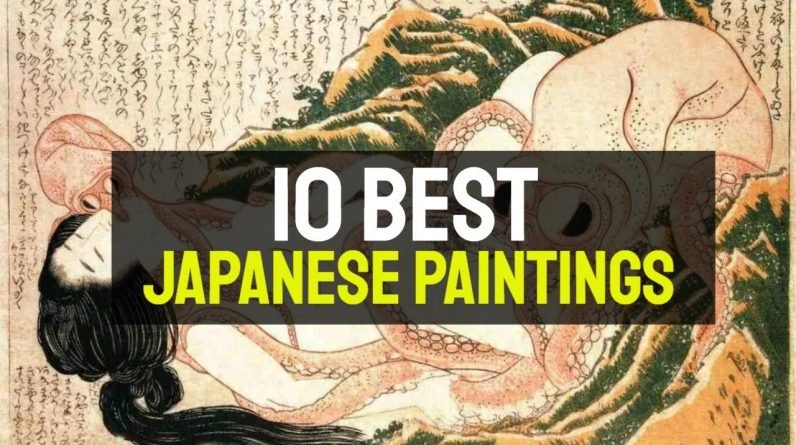Are you ready to explore the remarkable world of Francisco de Goya’s art? In this collection, you will discover the ten most famous paintings crafted by this renowned Spanish artist.
Brace yourself for an emotional journey as you immerse yourself in the captivating scenes Goya has brought to life on canvas. From the hauntingly macabre ‘Saturn Devouring His Son’ to the powerful depiction of resistance in ‘The Third of May 1808,’ each painting unveils a unique story that will leave you awestruck.
As you delve into Goya’s masterpieces, you will witness his unparalleled ability to evoke raw human emotions and shed light on the darkest corners of the human experience.
Get ready to be enthralled by the artistic genius of Francisco de Goya.
Saturn Devouring His Son
When discussing the famous Francisco De Goya painting, ‘Saturn Devouring His Son’, you can see the horrifying depiction of the god Saturn devouring his own child. This painting, created between 1819 and 1823, is a part of Goya’s series of Black Paintings.
The dark and gruesome nature of the artwork captures the viewer’s attention and evokes a sense of unease. Goya’s use of bold brushstrokes and intense colors adds to the raw and disturbing atmosphere of the piece. The composition is deliberately chaotic, with Saturn’s wild and frenzied expression reflecting his madness and brutality.
The painting’s subject matter raises questions about violence, power, and the destructive nature of humanity. Overall, ‘Saturn Devouring His Son’ is a haunting and thought-provoking masterpiece that continues to captivate audiences with its macabre imagery.
The Third of May 1808
The Third of May 1808 depicts the brutal execution of Spanish civilians by French soldiers during the Peninsular War. This iconic painting by Francisco de Goya captures the raw emotions and horrors of war in a vivid and haunting manner.
The composition of the painting is striking, with the central figure of a man in white, representing the innocent victims, illuminated against the darkness of the night. The use of light and shadow is masterful, creating a stark contrast that intensifies the sense of brutality and despair.
Goya’s choice to portray the faces of the soldiers as anonymous and dehumanized adds to the chilling nature of the scene. The Third of May 1808 serves as a powerful reminder of the atrocities committed during wartime and the enduring impact on humanity.
The Sleep of Reason Produces Monsters
Explore Goya’s eerily captivating painting, ‘The Sleep of Reason Produces Monsters,’ which delves into the consequences of a dormant intellect. This thought-provoking artwork, created in 1799, is a part of Goya’s series of etchings called Los Caprichos.
The painting portrays a man, assumed to be Goya himself, slumped over a table, surrounded by grotesque creatures lurking in the darkness. The central figure’s expression is one of vulnerability and resignation, as if his rationality has been overwhelmed by the irrational and sinister forces that emerge when reason sleeps.
Goya’s use of chiaroscuro intensifies the eerie atmosphere, highlighting the sharp contrast between light and shadow. The intricate details of the monsters, resembling human-animal hybrids, add an unsettling element to the composition.
‘The Sleep of Reason Produces Monsters’ serves as a cautionary reminder of the dangers of intellectual complacency and the potential horrors that can arise when reason is dormant.
The Nude Maja
One of Goya’s most famous paintings is the Nude Maja, a captivating portrait that showcases the artist’s skill and mastery of the human form. In this painting, Goya presents a reclining female figure, completely naked, with a confident and provocative gaze.
The use of soft, warm tones and delicate brushwork enhances the sensuality and beauty of the subject. Goya pays meticulous attention to detail, from the intricate folds of the bed sheets to the subtle shadows on the model’s body.
The Nude Maja challenges societal norms and traditional notions of modesty, as it boldly celebrates the female form. Through this masterpiece, Goya demonstrates his ability to capture both the physical and emotional essence of his subjects, leaving a lasting impression on the viewer.
The Black Paintings
Moving from the captivating portrait of the Nude Maja, let’s delve into Goya’s renowned series known as the Black Paintings. These works are a stark departure from the elegance and sensuality of his earlier works. Painted in the later years of his life, during a time of personal turmoil and political upheaval, the Black Paintings are characterized by their dark and somber tones, as well as their haunting and macabre subject matter.
One of the most famous paintings from this series is ‘Saturn Devouring His Son,’ which depicts the mythological god Saturn feasting on one of his own children. The intense and visceral nature of this piece reflects the artist’s own inner turmoil and serves as a powerful commentary on the destructive nature of power.
The Black Paintings are a testament to Goya’s ability to capture the darker aspects of the human experience and his willingness to confront the harsh realities of life.
The Colossus
‘The Colossus’ exemplifies Goya’s mastery in portraying the overwhelming and ambiguous nature of power. This iconic painting, created in 1808, depicts a giant figure dominating the landscape, symbolizing the colossal power held by those in authority.
The figure’s immense size and dark, brooding presence convey a sense of awe and fear, evoking the potential for destruction and oppression that power can wield. Goya’s use of light and shadow adds depth and intensity to the composition, further enhancing the emotional impact of the artwork.
Through his skillful brushwork and attention to detail, Goya invites viewers to contemplate the often complex and contradictory nature of power, highlighting its potential to both inspire and oppress.
‘The Colossus’ remains a powerful and thought-provoking testament to Goya’s ability to capture the complexities of the human experience.
The Executions of the Third of May
Explore the profound impact of ‘The Executions of the Third of May’ as it delves into the depths of human suffering and the brutality of conflict.
Francisco de Goya’s masterpiece captures the tragic events that occurred during the Peninsular War in Spain. The painting depicts the execution of Spanish rebels by French soldiers on May 3, 1808.
Goya’s use of vivid colors and dramatic lighting intensifies the emotional impact of the scene, evoking a sense of horror and despair. The composition, with the central figure of the man in white, his face illuminated and arms outstretched in surrender, draws the viewer’s attention and emphasizes the vulnerability and powerlessness of the victims.
Through this work, Goya forces us to confront the brutality of war and the devastating consequences it has on ordinary people.
The Dog
When discussing Francisco de Goya’s most famous paintings, it’s important to mention ‘The Dog’, a haunting and enigmatic work that captures the viewer’s attention with its mysterious and melancholic atmosphere.
This small painting, measuring only 21 by 14 inches, depicts a lone dog staring directly at the viewer with its sad and penetrating gaze. The dog’s expression is filled with a sense of loneliness and despair, evoking a deep emotional response from the viewer.
The use of dark and muted colors, along with the loose brushwork, adds to the overall melancholic mood of the painting. ‘The Dog’ is a testament to Goya’s ability to convey profound emotions through his art, leaving a lasting impression on those who encounter it.
The Disasters of War
Captivating viewers with its raw depiction of war, ‘The Disasters of War’ showcases Francisco de Goya’s powerful storytelling through haunting imagery.
This series of prints, created between 1810 and 1820, offers a searing critique of the brutality and inhumanity of armed conflict. Goya’s masterful use of chiaroscuro, dramatic composition, and meticulous attention to detail creates a sense of unease and horror in the viewer.
Each print serves as a visual narrative, capturing the atrocities committed during the Peninsular War and its aftermath. From the mutilation of bodies to the anguish of civilians, Goya spares no detail in portraying the devastating consequences of war.
By presenting these scenes without romanticizing or glorifying war, Goya forces us to confront the harsh realities of human cruelty and suffering.
‘The Disasters of War’ remains a poignant reminder of the futility of war and the need for compassion and empathy.
The Witches’ Sabbath
Continuing the exploration of Goya’s powerful storytelling, delve into the haunting imagery of ‘The Witches’ Sabbath’, one of his most famous paintings.
This dark and macabre masterpiece depicts a gathering of witches and demons engaged in a sinister ritual. Goya’s use of intense colors, dramatic lighting, and expressive brushwork creates a sense of foreboding and menace.
The composition is carefully arranged, with the central figure of a goat-headed demon commanding the attention of the viewer. Surrounding him, the witches engage in grotesque and disturbing acts, their contorted bodies and twisted expressions adding to the sense of unease.
Goya’s depiction of the supernatural and the grotesque in ‘The Witches’ Sabbath’ serves as a chilling reminder of the hidden darkness that can reside within humanity.
Frequently Asked Questions
What Is the Meaning Behind the Title “The Sleep of Reason Produces Monsters”?
The title ‘The Sleep of Reason Produces Monsters’ refers to Francisco de Goya’s etching. It symbolizes the consequences of irrationality and ignorance, suggesting that when reason is dormant, monstrous ideas and actions can emerge.
How Did Francisco De Goya Create Such Realistic and Detailed Paintings in His Time?
Goya’s ability to create realistic and detailed paintings in his time can be attributed to his meticulous observation skills, technical expertise, and innovative use of light and shadow.
What Is the Historical Significance of “The Third of May 1808” Painting?
The historical significance of ‘The Third of May 1808’ painting lies in its portrayal of the Spanish resistance against French occupation, highlighting the brutality of war and the fight for freedom.
Did Goya Face Any Criticism or Backlash for His Controversial Paintings, Such as “The Nude Maja”?
Did Goya face criticism or backlash for his controversial paintings, like ‘The Nude Maja’? Yes, he did. Despite being a talented artist, Goya’s provocative works challenged societal norms and offended the conservative establishment, leading to criticism and censorship.
Are There Any Hidden Symbols or Messages in Goya’s “The Witches’ Sabbath” Painting?
In Goya’s “The Witches’ Sabbath” painting, there are hidden symbols and messages that add depth to the artwork. These symbols reflect the artist’s critique of society and its dark underbelly, inviting viewers to ponder its deeper meanings.
Conclusion
In conclusion, Francisco de Goya’s paintings are renowned for their powerful and emotive portrayal of human suffering, societal injustices, and the darker aspects of the human psyche.
His works, such as ‘Saturn Devouring His Son’ and ‘The Third of May 1808,’ continue to captivate audiences with their raw and haunting imagery.
Goya’s ability to convey intense emotions and his masterful technique make him one of the most influential and celebrated artists in history.






